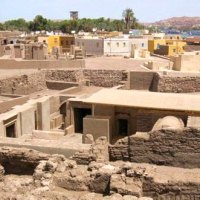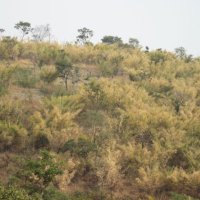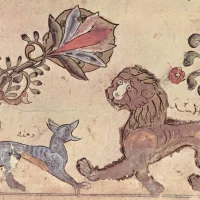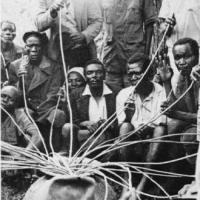A recent blog by the Agricultural Biodiversity Weblog, on the failure of an eco-promotion project for indigenous coffee in Uganda, I don’t find surprising and agree with the ‘lessons learned’ scenario presented in the blog, and particularly that local markets need to be explored before going international.
The idea (of commercializing indigenous coffee) is great, and that’s apparently part of the problem, as the blog suggests: the idea seemed more marketable than the product itself.
But there are many examples of similar attempts to commercialize indigenous products that seem to be working. For example, marula nuts in Southern Africa (makes a delightful aperitif, imported from South Africa, that is popular here), argon oil in Morocco, and Shea oil in the western Sahel, just to name a few.
In these and similar cases a good deal of research was conducted beforehand in order to link up both to local producer groups as well as to commercial outlets; surely the Uganda coffee project could have learned from these and similar efforts.
In Burundi, there is a Catholic mission group that has been working with smallholders to develop a line of wild mushroom products – both dried and in oil. They are sold only locally and are well received.

Dried, wild mushrooms sold locally
The work we are doing with the Hotel Club du Lac Tanganyika in furthering indigenous vegetables by way of our Contract Farming project is another example of local-level commercialization, which now includes Livingstone Potatoes, local varieties of colocaise, and a dryland strain of amaranth. In the future we hope to also include garden eggs, indigenous gourds, and several other items.
The goals are not international, but aim to introduce the crops commercially at the Hotel, while also working with local producers in their cultivation and in collecting planting materials of indigenous crops from different parts of the country.
Also, we are introducing some of the lore associated with the different indigenous crops, such as Native Potatoes, which were mentioned various times in the writings of David Livingstone, as in the following:
_7th February, 1870…Rest, shelter, and boiling all the water I used, and above all the new species of potato called Nyumbo, much famed among the natives as restorative, soon put me all to rights. Katomba supplied me liberally with nyumbo; and, but for a slightly medicinal taste, which is got rid of by boiling in two waters, this vegetable would be equal to English potatoes.
Source: David Livingstone, The Last Journals…in Central Africa, from 1865 to His Death. Vol.II

Livingstone potatoes, ready for the Hotel kitchen
The strain of dryland Amaranthus mentioned above, from eastern Burundi, is semi-cultivated; i.e., it is left to grow on its own. It is far more resistant to drought that cultivated amaranth, and also has a very pleasant piquant taste. I brought some of the planting material down here to the Imbo (sandy, hot agro-climatic zone along Lake Tanganyika) where we tried it, and found it grew quite well and so we’re multiplying it for use in the village and for sale. It is easy enough for smallholders here to propagate, and also a variety that we can incorporate into the Contract Farming work and promote as a ‘Lost Crop’ at the hotel.

Indigenous Amaranthus in N.E. Burundi
Other indigenous crops that we have here are (as often the case) more robust that ‘improved’ strains, but the trade-off may be smaller or exhibiting other less desirable consumer characteristics.
For example, we’re using some very good tomato seeds that were developed in Kenya for our Contract Farming project in the village that require excellent husbandry, but we’re able to train farmers in the project in the use of a cheap organic pesticide (here) as well as robust companion planting (here – no row-cropping!), use of goat manure (‘everyone’ has several goats and the manure can be directly applied, unlike cow manure), and mulching with straw that is taken from the rice fields of the farmers.
The same seeds, planted by smallholders on their own plots, simply do not produce (for them) as well, and so more hardy but less prolific tomato strains are used by local farmers, such as that displayed by the women, below, who grows only a variety of very small tomato that is semi-wild – this is in N.E. Burundi:

Local tomatoes for sale in a market in N.E. Burundi
There is a type of indigenous red rice that grows here but is unstudied. I only wish that IRRI (International Rice Research Institute) or the African Rice Center would support work on this dryland rice – it grows well, is quite hardy, but is quickly disappearing with the introduction of new strains developed outside of the country based on Asian varieties.
For more information on indigenous African rice in West Africa, see this and this blog.
And there are other, similar examples of local varieties that might contribute to food security as well as to food variety – and that benefit from exposure to wealthy Burundians and visitors to the Country who stay or dine at the Hotel..
Related articles
- How agroforestry schemes can improve food security in developing countries (guardian.co.uk)
- The Social Life of Beans in Burundi – Part 2 (dianabuja.wordpress.com)
- The Social Life of Beans in Burundi (dianabuja.wordpress.com)
- NEW – Burundi AA Kirirmiro Coffee! (coffeeam.wordpress.com)


























Pingback: Contract Farming in the Village and Starting a Producer Cooperative « Dianabuja's Blog
Hi there. Thanks for the link. Just like to point out that the name of the blog is the Agricultural Biodiversity Weblog, not Nibbles. Nibbles is just what we call our regular posts where we summarize a whole series of interesting articles and posts in other blogs each in a sentence (or less).
LikeLike
Ok, thanks for the correction – and I do like the links to various articles that you folks do!
LikeLike
And we also really love what you do!
LikeLike
Merci!
LikeLike
Pingback: Coffee Culture in Africa – an Historical Peek « Dianabuja's Blog